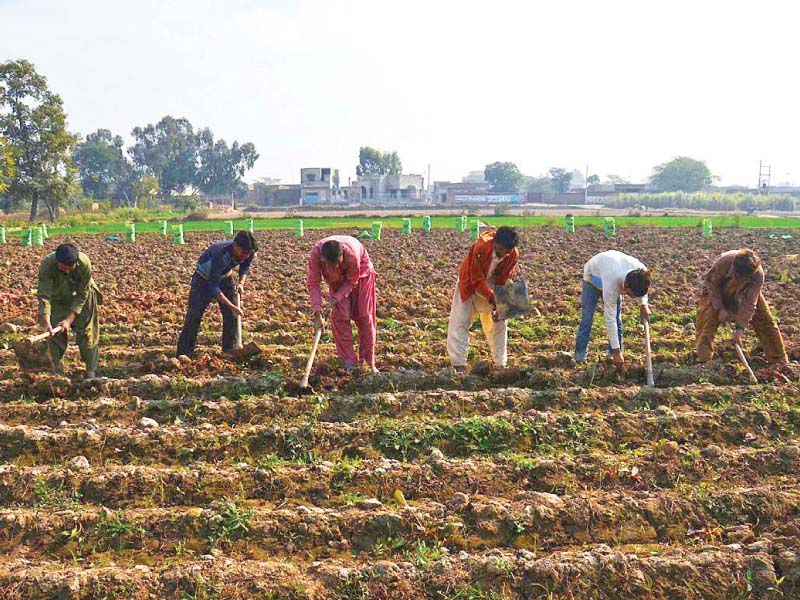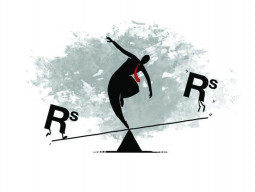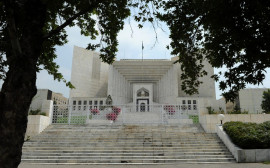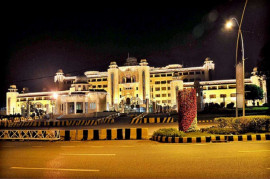
HYDERABAD: With the agriculture sector recording a five-year high growth of 3.5% in the outgoing fiscal year, the government in the Federal Budget 2017-18 has increased bank credit ceiling manifold, reduced tax on fertilisers and waived import duty on combined harvesters.
According to the new budget, around 43% increase in agricultural loans, up from Rs700 billion in the outgoing fiscal year to Rs1,001 billion for the upcoming year, has been proposed.
Additionally, Zarai Taraqiati Bank Limited (ZTBL) and National Bank of Pakistan (NBP) will offer loans of up to Rs50,000 to small farmers with landholdings of up to 12.5 acres at a lower interest rate of 9.9%.
Similarly, general sales tax (GST) on di-ammonium phosphate has been slashed from Rs400 to Rs100 and customs duty and GST on agricultural machinery - combined harvesters - have been removed.
Nevertheless, not many were happy with the government’s moves, saying that more was required by the industry.
Speaking to The Express Tribune, Sindh Abadgar Board (SAB) Vice President Mehmood Nawaz Shah said that while the allocated amount for agricultural credit was good and substantial, the requirement for loans was much higher in the country.
“The Rs1,001-billion credit is disproportionate to the Rs6,000-billion agriculture economy,” he said. “The utilisation of credit in Sindh remains low, unlike in Punjab, due to complications in the processing of loan applications.”
He added that in the outgoing fiscal year, against a credit allocation of Rs89 billion in Sindh, only Rs53 billion was utilised.
The Economic Survey 2016-17 states that the agriculture sector is also benefiting from the China-Pakistan Economic Corridor (CPEC) projects. But the SAB official questioned the claim, pointing to a lack of budgetary allocation for CPEC-related agricultural projects.
“The federal government should develop a strategy with provincial governments about how to link the agriculture sector with CPEC,” he said. “We also need a policy for the export of agricultural commodities to the countries that are part of China’s One Belt, One Road (OBOR) initiative.”
Ghulam Mustafa Saand - a Sanghar district-based small farmer - said loans of Rs50,000 for small farmers were insufficient for cultivating 12.5 acres of land.
Trade and industry
Hyderabad Chamber of Commerce and Industry Vice President Ziauddin Ahmed decried that the new budget provided no direct tax relief for the city’s two-wheel and three-wheel auto industry.
He added that some 14 industrial units in Hyderabad’s SITE area were engaged in the assembly and manufacturing of motorbikes.
“Many units have started manufacturing almost all parts except the engine and some electrical components which are imported from China,” he said. “Some have even begun exports to countries like Afghanistan and Nepal. Therefore, this industry deserves some tax relief.”
On the other hand, the Hyderabad Chamber of Small Traders and Small Industries (HCSTSI) viewed the budget as balanced. However, it objected to the taxes on non-filers of tax returns.
“Non-filing traders and their businesses will continue to be adversely affected by the taxes,” said HCSTSI’s Doulat Ram Lohano. “The budget has also ignored small industries as no support like low interest loans and tax relief has been announced.”
Published in The Express Tribune, May 28th, 2017.
Like Business on Facebook, follow @TribuneBiz on Twitter to stay informed and join in the conversation.























































COMMENTS
Comments are moderated and generally will be posted if they are on-topic and not abusive.
For more information, please see our Comments FAQ